

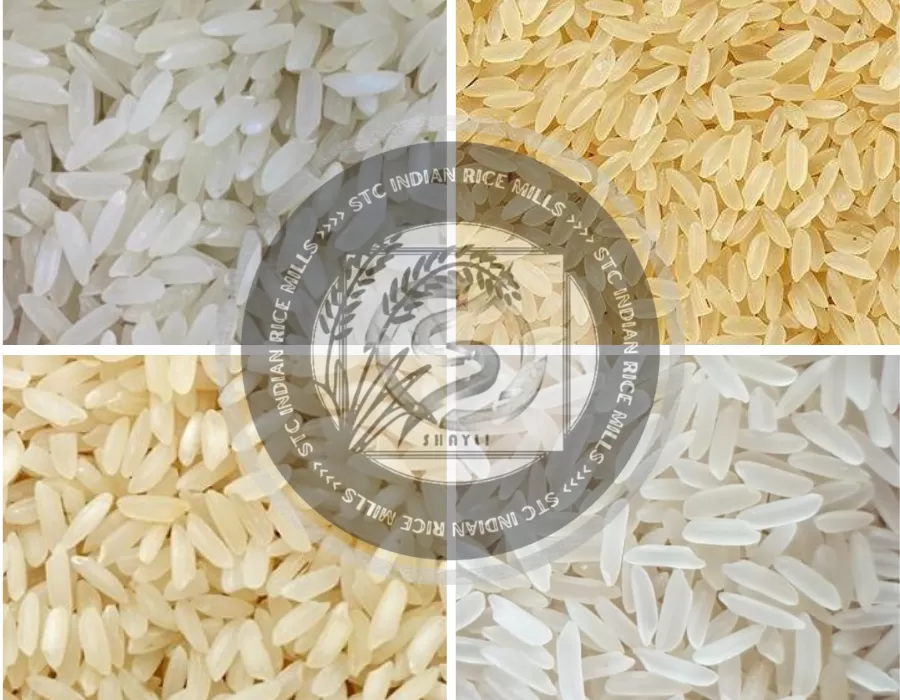
Indian Non-Basmati Rice :-
Sugandha, Sharbati, PR11, PR14, PR106, PR47, IR64, PR26 and Sona Masoori Rice are Non-Basmati Rice :-
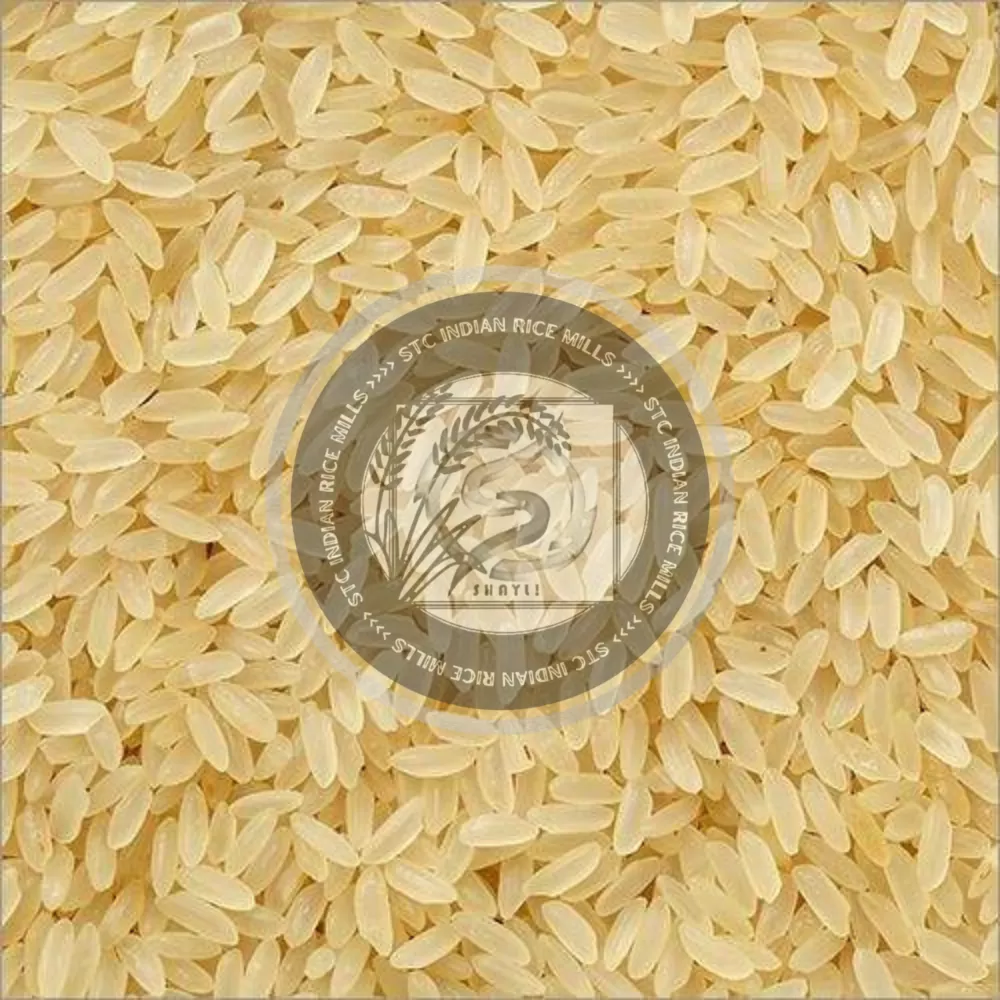
About Indian IRA-64 Long Grain Rice :-
Milling & Parboiling Process :-
| Origin | India |
| Purity | 95.00% |
| Natural Admixture | 5.00% |
| Average Grain Length | 5.90MM |
| Moisture | 14% MAX. |
| Broken Grain | 5% MAX. |
| Damage/Discolour Grain | 1% MAX. |
| Immature Grain | 1% MAX. |
| Contrasting Varieties | 0.00% |
| Under-milled & Red-striped | 0.00% |
| Sortex Clean |
100% |
| Color |
Yellow white |
| Polishing Grade |
Double silky Polished |
| Milling Degree | Well Milled |
| Foreign Matter | Nil |
| Packaging Type | Jute, PP, WPP, BOPP, Jambo PP, LDPET, Non-woven Bags & Side Gussetz, 3D/2D Pouches or (1kg to 1000kgs Bags Packaging Available as per Buyer's choices). |
| Supply Ability | 2000 tons Per Week |
| Main Export Market(S) | Europe, USA, Australia, Saudi Arabia, Kuwait, Egypt, UAE, Jordan, Oman, Bahrain, Yemen, Syria, Iraq, Libya, Turkey |
| Delivery Time | 15 Days |
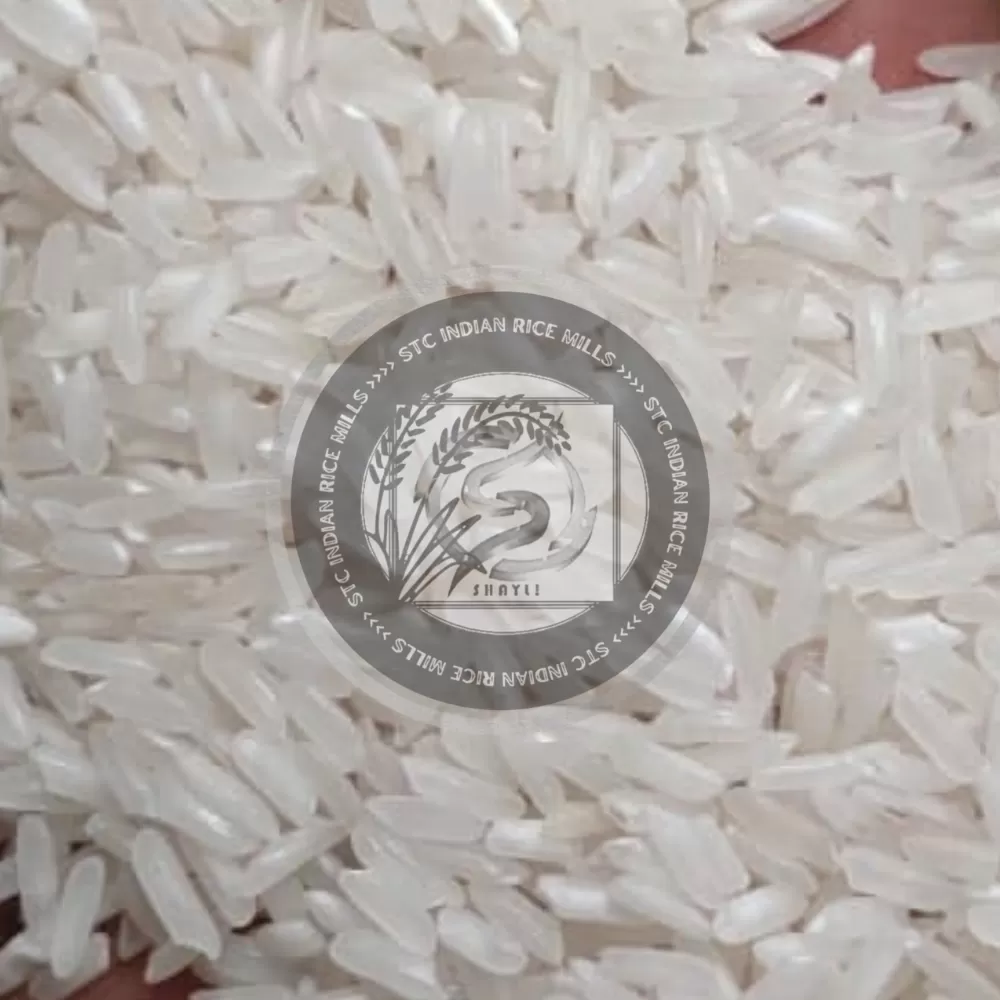
About Indian IRA-64 Long Grain Rice :-
Milling & Grading Process :-
| Origin | India |
| Purity | 95.00% |
| Natural Admixture | 5.00% |
| Average Grain Length | 5.90MM |
| Moisture | 14% MAX. |
| Broken Grain | 5% MAX. |
| Damage/Discolour Grain | 1% MAX. |
| Immature Grain | 1% MAX. |
| Contrasting Varieties | 0.00% |
| Under-milled & Red-striped | 0.00% |
| Sortex Clean |
100% |
| Color |
White |
| Polishing Grade |
Double silky Polished |
| Milling Degree | Well Milled |
| Foreign Matter | Nil |
| Packaging Type | Jute, PP, WPP, BOPP, Jambo PP, LDPET, Non-woven Bags & Side Gussetz, 3D/2D Pouches or (1kg to 1000kgs Bags Packaging Available as per Buyer's choices). |
| Supply Ability | 2000 tons Per Week |
| Main Export Market(S) | Europe, USA, Australia, Saudi Arabia, Kuwait, Egypt, UAE, Jordan, Oman, Bahrain, Yemen, Syria, Iraq, Libya, Turkey |
| Delivery Time | 15 Days |
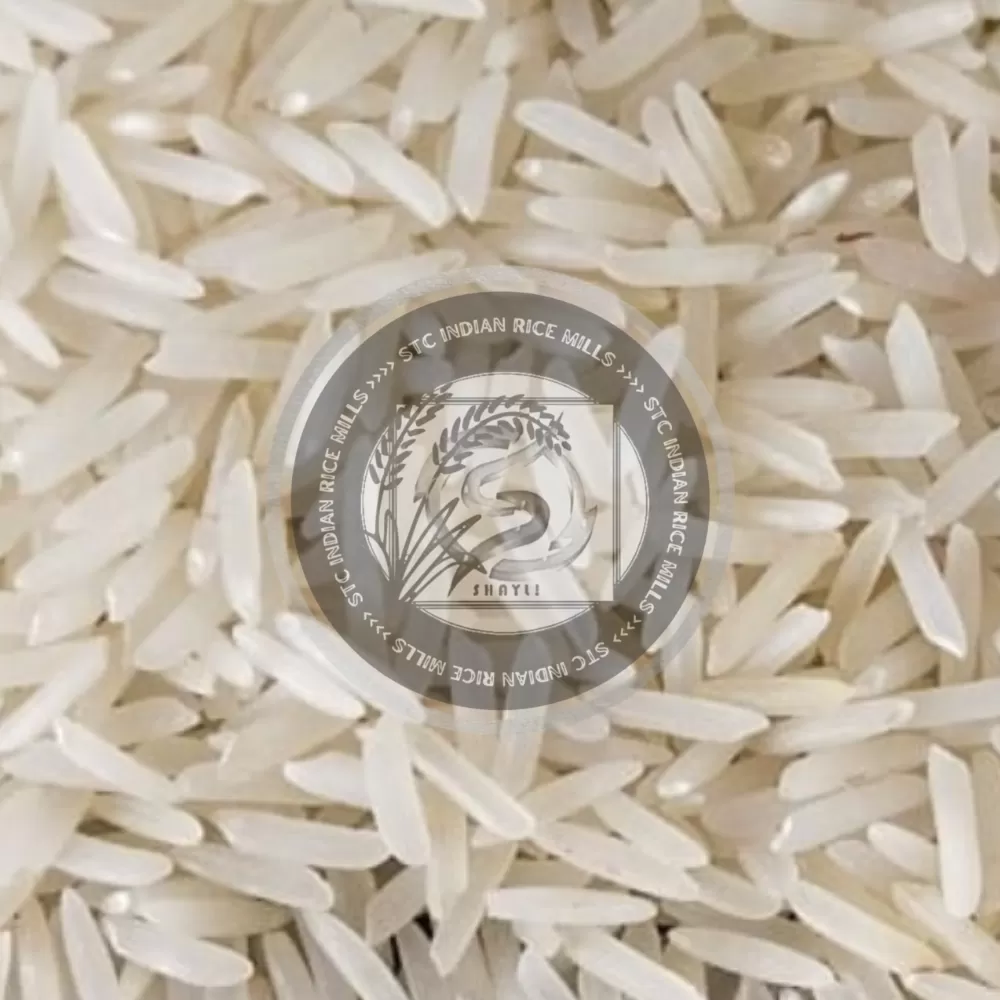
About Indian Sugandha Rice :-
Milling & Grading Process :-
| Origin | India |
| Purity | 95.00% |
| Natural Admixture | 5.00% |
| Average Grain Length | 7.90MM |
| Moisture | 12.5% MAX. |
| Broken Grain | 1% MAX. |
| Damage/Discolour Grain | 1% MAX. |
| Immature Grain | 1% MAX. |
| Contrasting Varieties | 0.00% |
| Under-milled & Red-striped | 0.00% |
| Sortex Clean |
100% |
| Color |
White |
| Polishing Grade |
Double silky Polished |
| Milling Degree | Well Milled |
| Foreign Matter | Nil |
| Packaging Type | Jute, PP, WPP, BOPP, Jambo PP, LDPET, Non-woven Bags & Side Gussetz, 3D/2D Pouches or (1kg to 1000kgs Bags Packaging Available as per Buyer's choices). |
| Supply Ability | 2000 tons Per Week |
| Main Export Market(S) | Europe, USA, Australia, Saudi Arabia, Kuwait, Egypt, UAE, Jordan, Oman, Bahrain, Yemen, Syria, Iraq, Libya, Turkey |
| Delivery Time | 15 Days |
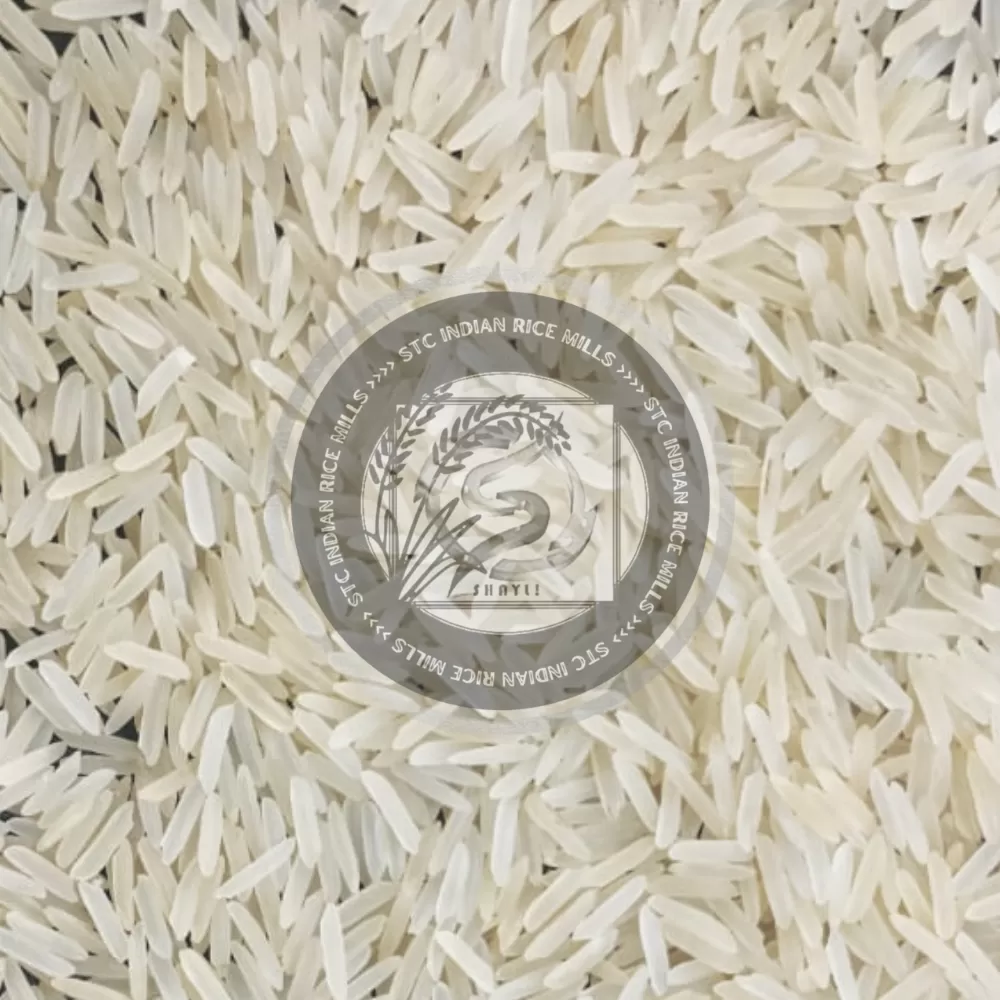
About Indian Sugandha Rice :-
Milling & Steaming Process :-
| Origin | India |
| Purity | 95.00% |
| Natural Admixture | 5.00% |
| Average Grain Length | 7.90MM |
| Moisture | 12.5% MAX. |
| Broken Grain | 1% MAX. |
| Damage/Discolour Grain | 1% MAX. |
| Immature Grain | 1% MAX. |
| Contrasting Varieties | 0.00% |
| Under-milled & Red-striped | 0.00% |
| Sortex Clean |
100% |
| Color |
Yellow white |
| Polishing Grade |
Double silky Polished |
| Milling Degree | Well Milled |
| Foreign Matter | Nil |
| Packaging Type | Jute, PP, WPP, BOPP, Jambo PP, LDPET, Non-woven Bags & Side Gussetz, 3D/2D Pouches or (1kg to 1000kgs Bags Packaging Available as per Buyer's choices). |
| Supply Ability | 2000 tons Per Week |
| Main Export Market(S) | Europe, USA, Australia, Saudi Arabia, Kuwait, Egypt, UAE, Jordan, Oman, Bahrain, Yemen, Syria, Iraq, Libya, Turkey |
| Delivery Time | 15 Days |
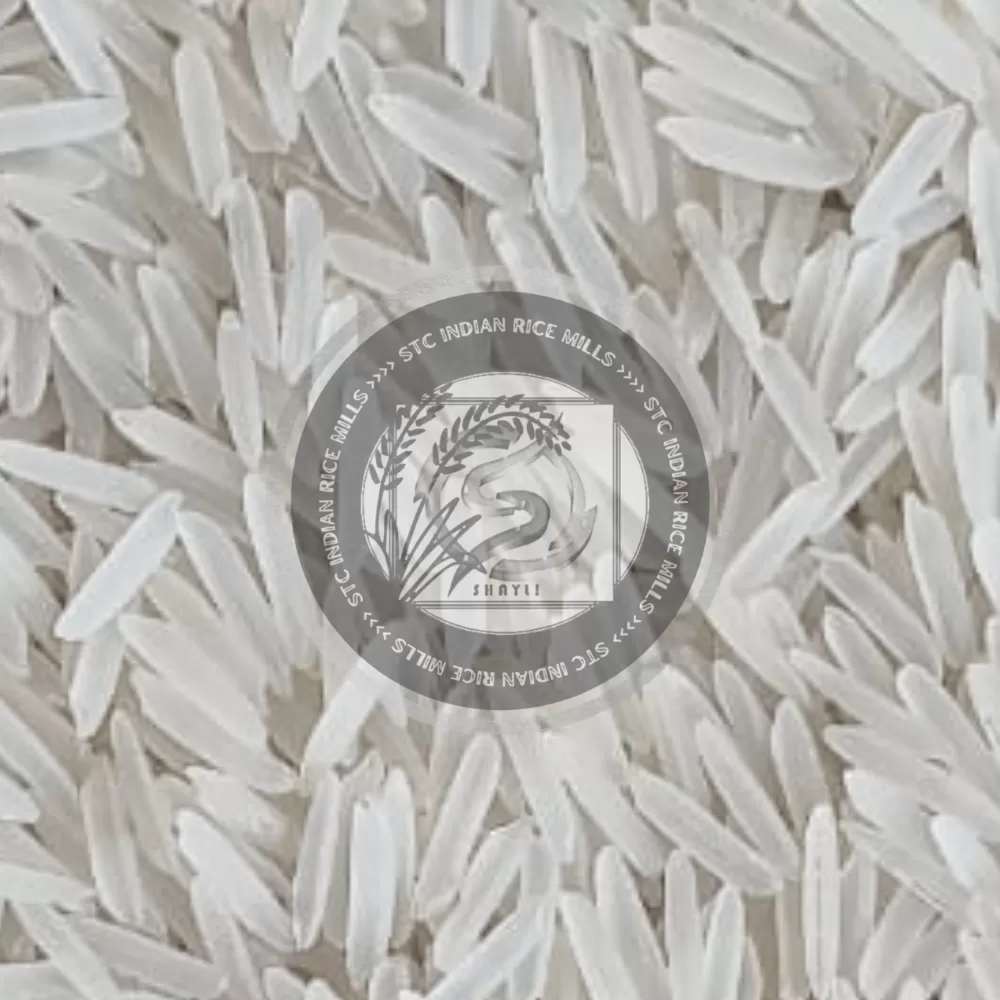
About Indian Sugandha Rice :-
Milling & Parboiling Process :-
| Origin | India |
| Purity | 95.00% |
| Natural Admixture | 5.00% |
| Average Grain Length | 7.90MM |
| Moisture | 12.5% MAX. |
| Broken Grain | 1% MAX. |
| Damage/Discolour Grain | 1% MAX. |
| Immature Grain | 1% MAX. |
| Contrasting Varieties | 0.00% |
| Under-milled & Red-striped | 0.00% |
| Sortex Clean |
100% |
| Color |
White/Creamy |
| Polishing Grade |
Double silky Polished |
| Milling Degree | Well Milled |
| Foreign Matter | Nil |
| Packaging Type | Jute, PP, WPP, BOPP, Jambo PP, LDPET, Non-woven Bags & Side Gussetz, 3D/2D Pouches or (1kg to 1000kgs Bags Packaging Available as per Buyer's choices). |
| Supply Ability | 2000 tons Per Week |
| Main Export Market(S) | Europe, USA, Australia, Saudi Arabia, Kuwait, Egypt, UAE, Jordan, Oman, Bahrain, Yemen, Syria, Iraq, Libya, Turkey |
| Delivery Time | 15 Days |
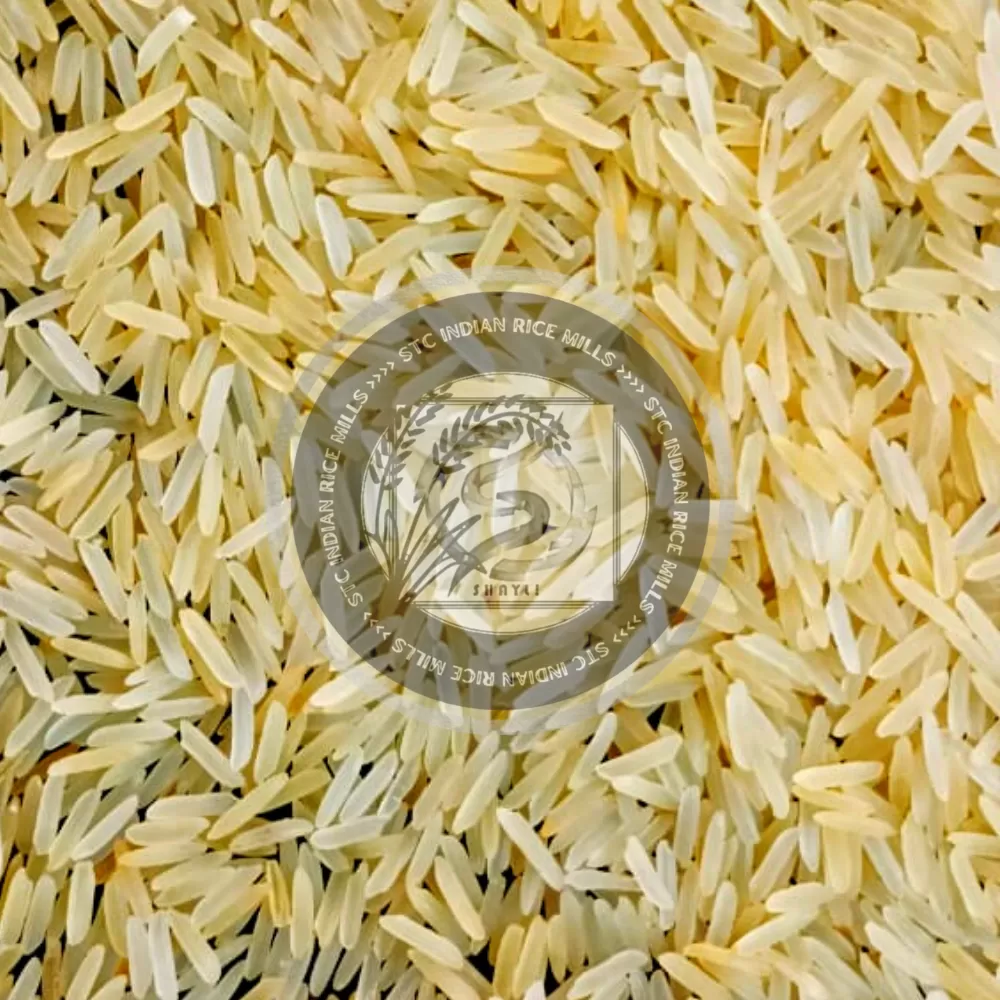
About Indian Sugandha Rice :-
Milling & Golden Parboiling Process :-
| Origin | India |
| Purity | 95.00% |
| Natural Admixture | 5.00% |
| Average Grain Length | 7.90MM |
| Moisture | 12.5% MAX. |
| Broken Grain | 1% MAX. |
| Damage/Discolour Grain | 1% MAX. |
| Immature Grain | 1% MAX. |
| Contrasting Varieties | 0.00% |
| Under-milled & Red-striped | 0.00% |
| Sortex Clean |
100% |
| Color |
Golden |
| Polishing Grade |
Double silky Polished |
| Milling Degree | Well Milled |
| Foreign Matter | Nil |
| Packaging Type | Jute, PP, WPP, BOPP, Jambo PP, LDPET, Non-woven Bags & Side Gussetz, 3D/2D Pouches or (1kg to 1000kgs Bags Packaging Available as per Buyer's choices). |
| Supply Ability | 2000 tons Per Week |
| Main Export Market(S) | Europe, USA, Australia, Saudi Arabia, Kuwait, Egypt, UAE, Jordan, Oman, Bahrain, Yemen, Syria, Iraq, Libya, Turkey |
| Delivery Time | 15 Days |
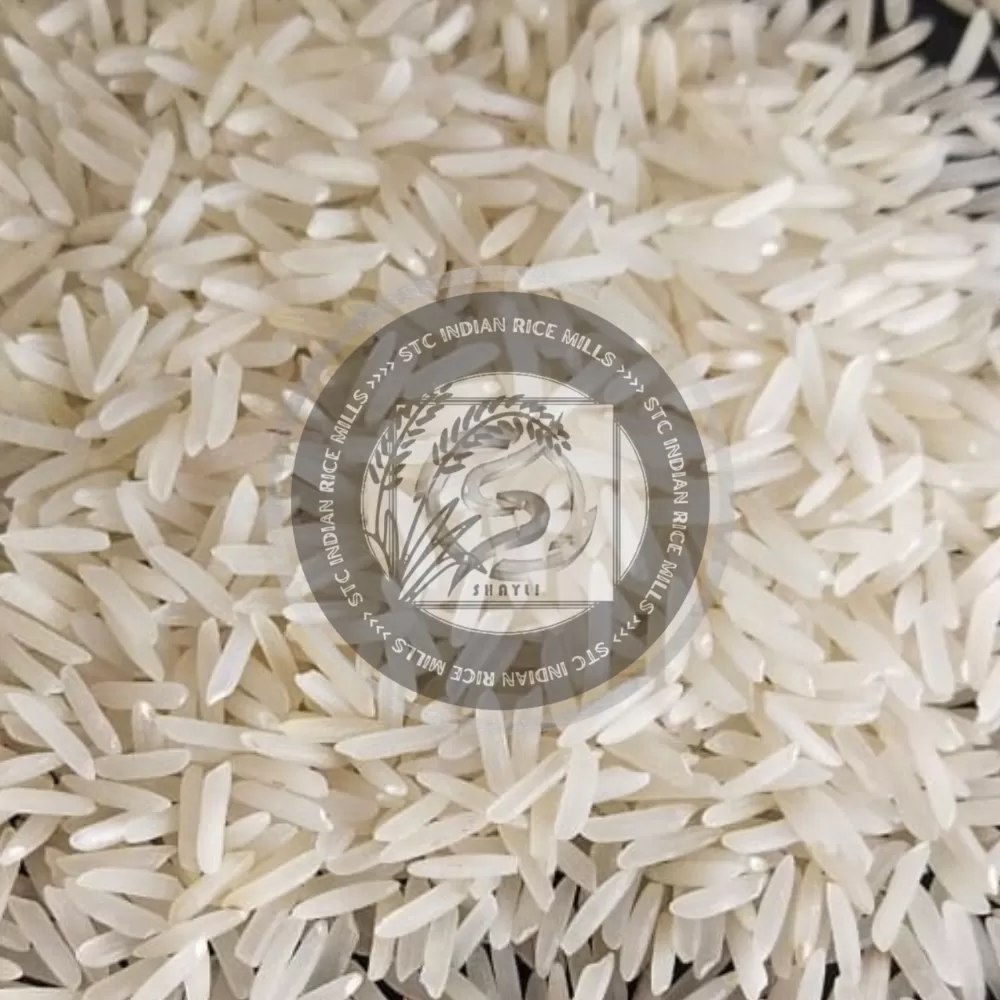
About Indian Sharbati Rice :-
Milling & Grading Process :-
| Origin | India |
| Purity | 95.00% |
| Natural Admixture | 5.00% |
| Average Grain Length | 7.10MM |
| Moisture | 12.5% MAX. |
| Broken Grain | 1% MAX. |
| Damage/Discolour Grain | 1% MAX. |
| Immature Grain | 1% MAX. |
| Contrasting Varieties | 0.00% |
| Under-milled & Red-striped | 0.00% |
| Sortex Clean |
100% |
| Color |
White |
| Polishing Grade |
Double silky Polished |
| Milling Degree | Well Milled |
| Foreign Matter | Nil |
| Packaging Type | Jute, PP, WPP, BOPP, Jambo PP, LDPET, Non-woven Bags & Side Gussetz, 3D/2D Pouches or (1kg to 1000kgs Bags Packaging Available as per Buyer's choices). |
| Supply Ability | 2000 tons Per Week |
| Main Export Market(S) | Europe, USA, Australia, Saudi Arabia, Kuwait, Egypt, UAE, Jordan, Oman, Bahrain, Yemen, Syria, Iraq, Libya, Turkey |
| Delivery Time | 15 Days |
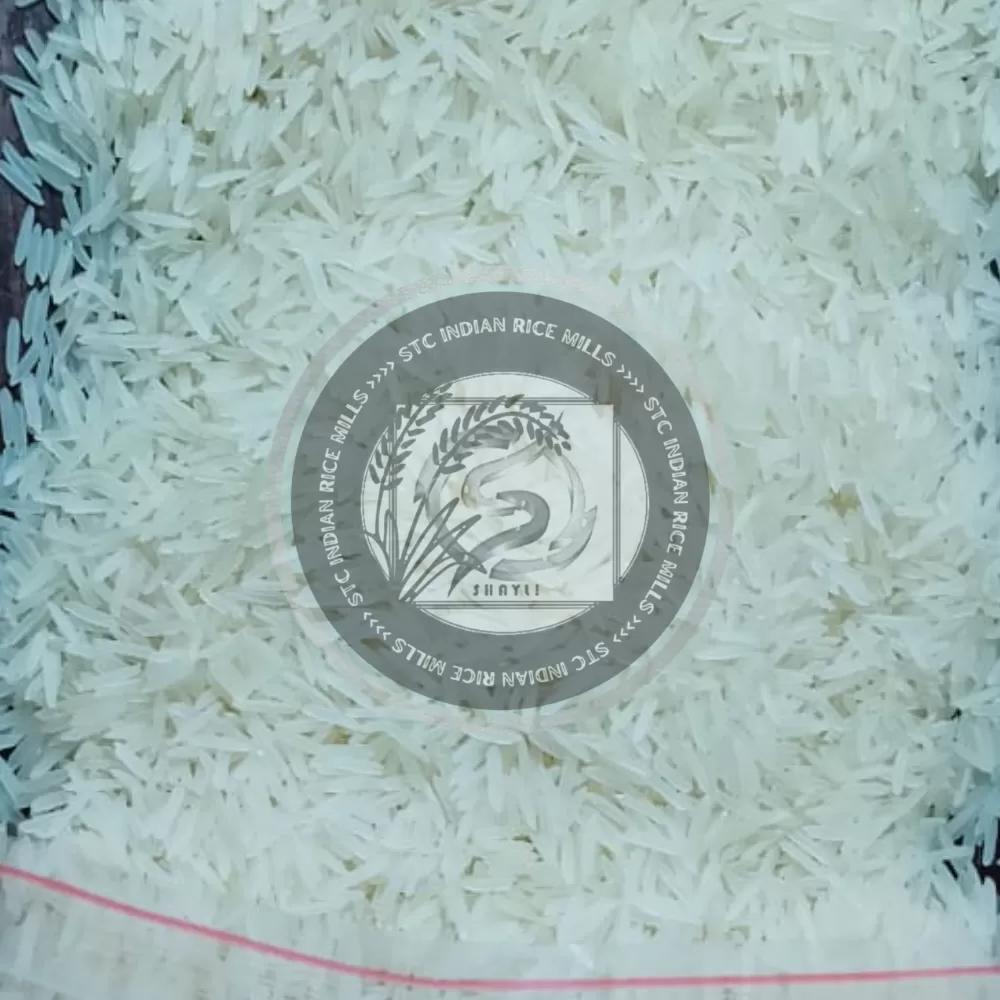
About Indian Sharbati Rice :-
Milling & Parboiling Process :-
| Origin | India |
| Purity | 95.00% |
| Natural Admixture | 5.00% |
| Average Grain Length | 7.10MM |
| Moisture | 12.5% MAX. |
| Broken Grain | 1% MAX. |
| Damage/Discolour Grain | 1% MAX. |
| Immature Grain | 1% MAX. |
| Contrasting Varieties | 0.00% |
| Under-milled & Red-striped | 0.00% |
| Sortex Clean |
100% |
| Color |
White/Creamy |
| Polishing Grade |
Double silky Polished |
| Milling Degree | Well Milled |
| Foreign Matter | Nil |
| Packaging Type | Jute, PP, WPP, BOPP, Jambo PP, LDPET, Non-woven Bags & Side Gussetz, 3D/2D Pouches or (1kg to 1000kgs Bags Packaging Available as per Buyer's choices). |
| Supply Ability | 2000 tons Per Week |
| Main Export Market(S) | Europe, USA, Australia, Saudi Arabia, Kuwait, Egypt, UAE, Jordan, Oman, Bahrain, Yemen, Syria, Iraq, Libya, Turkey |
| Delivery Time | 15 Days |
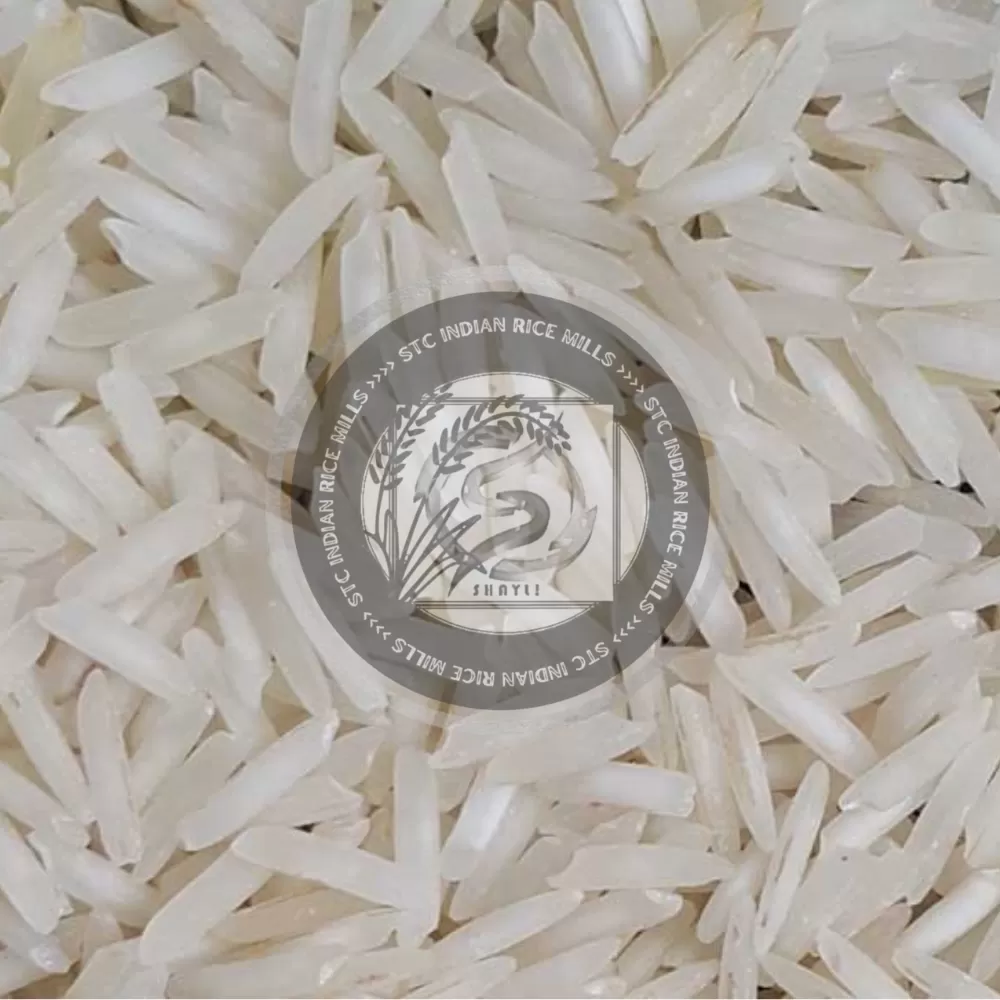
About Indian Sharbati Rice :-
Milling & Steaming Process :-
| Origin | India |
| Purity | 95.00% |
| Natural Admixture | 5.00% |
| Average Grain Length | 7.10MM |
| Moisture | 12.5% MAX. |
| Broken Grain | 1% MAX. |
| Damage/Discolour Grain | 1% MAX. |
| Immature Grain | 1% MAX. |
| Contrasting Varieties | 0.00% |
| Under-milled & Red-striped | 0.00% |
| Sortex Clean |
100% |
| Color |
Yellow white |
| Polishing Grade |
Double silky Polished |
| Milling Degree | Well Milled |
| Foreign Matter | Nil |
| Packaging Type | Jute, PP, WPP, BOPP, Jambo PP, LDPET, Non-woven Bags & Side Gussetz, 3D/2D Pouches or (1kg to 1000kgs Bags Packaging Available as per Buyer's choices). |
| Supply Ability | 2000 tons Per Week |
| Main Export Market(S) | Europe, USA, Australia, Saudi Arabia, Kuwait, Egypt, UAE, Jordan, Oman, Bahrain, Yemen, Syria, Iraq, Libya, Turkey |
| Delivery Time | 15 Days |
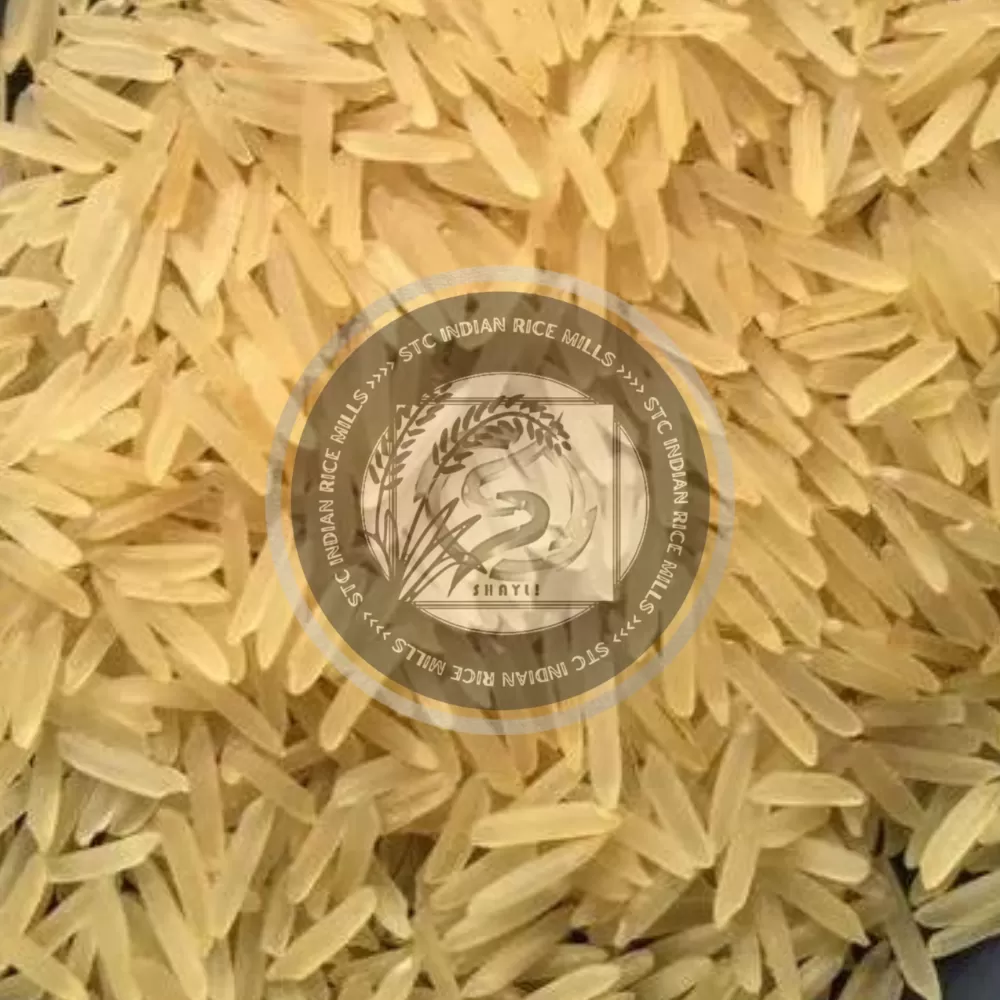
About Indian Sharbati Rice :-
Milling & Golden Parboiling Process :-
| Origin | India |
| Purity | 95.00% |
| Natural Admixture | 5.00% |
| Average Grain Length | 7.10MM |
| Moisture | 12.5% MAX. |
| Broken Grain | 1% MAX. |
| Damage/Discolour Grain | 1% MAX. |
| Immature Grain | 1% MAX. |
| Contrasting Varieties | 0.00% |
| Under-milled & Red-striped | 0.00% |
| Sortex Clean |
100% |
| Color |
Golden |
| Polishing Grade |
Double silky Polished |
| Milling Degree | Well Milled |
| Foreign Matter | Nil |
| Packaging Type | Jute, PP, WPP, BOPP, Jambo PP, LDPET, Non-woven Bags & Side Gussetz, 3D/2D Pouches or (1kg to 1000kgs Bags Packaging Available as per Buyer's choices). |
| Supply Ability | 2000 tons Per Week |
| Main Export Market(S) | Europe, USA, Australia, Saudi Arabia, Kuwait, Egypt, UAE, Jordan, Oman, Bahrain, Yemen, Syria, Iraq, Libya, Turkey |
| Delivery Time | 15 Days |
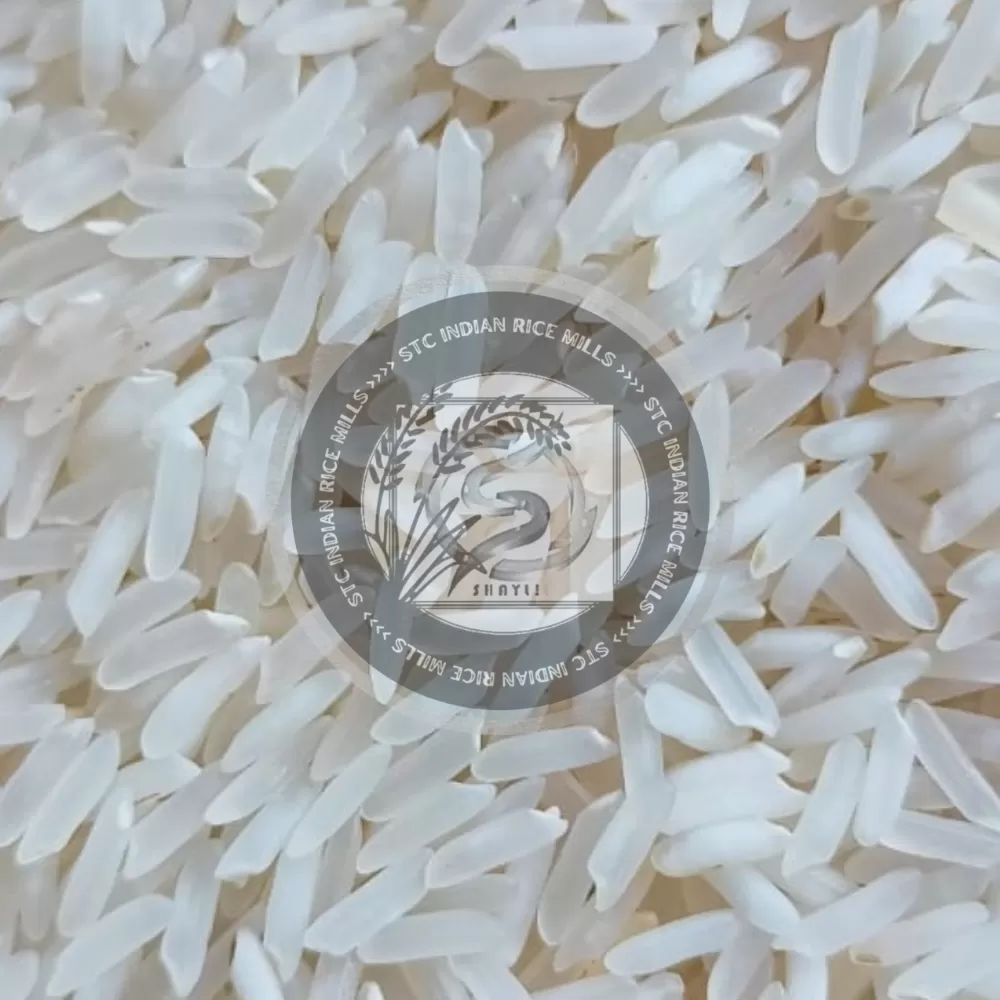
About Indian PR 11/14 Rice :-
Milling & Grading Process :-
| Origin | India |
| Purity | 95.00% |
| Natural Admixture | 5.00% |
| Average Grain Length | 6.90MM |
| Moisture | 13% MAX. |
| Broken Grain | 2% MAX. |
| Damage/Discolour Grain | 1% MAX. |
| Immature Grain | 1% MAX. |
| Contrasting Varieties | 0.00% |
| Under-milled & Red-striped | 0.00% |
| Sortex Clean |
100% |
| Color |
White |
| Polishing Grade |
Double silky Polished |
| Milling Degree | Well Milled |
| Foreign Matter | Nil |
| Packaging Type | Jute, PP, WPP, BOPP, Jambo PP, LDPET, Non-woven Bags & Side Gussetz, 3D/2D Pouches or (1kg to 1000kgs Bags Packaging Available as per Buyer's choices). |
| Supply Ability | 2000 tons Per Week |
| Main Export Market(S) | Europe, USA, Australia, Saudi Arabia, Kuwait, Egypt, UAE, Jordan, Oman, Bahrain, Yemen, Syria, Iraq, Libya, Turkey |
| Delivery Time | 15 Days |
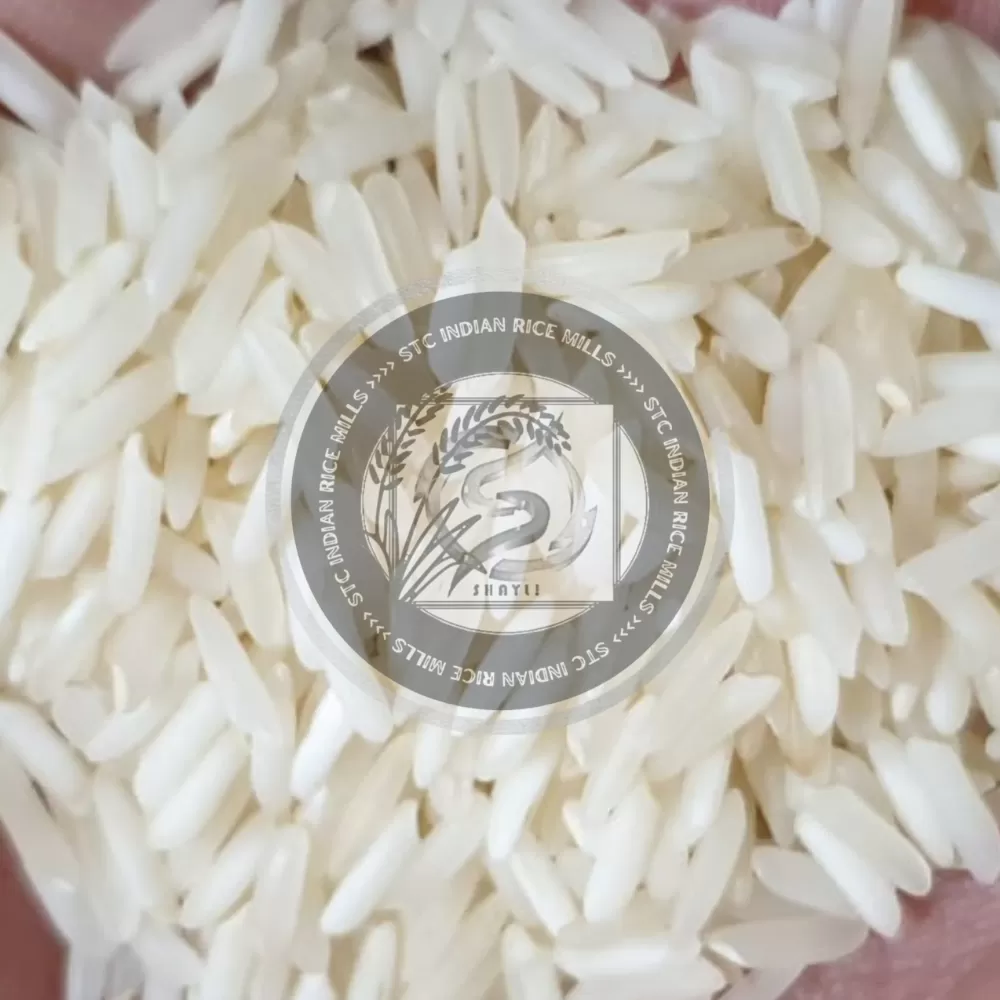
About Indian PR 11/14 Rice :-
Milling & Steaming Process :-
| Origin | India |
| Purity | 95.00% |
| Natural Admixture | 5.00% |
| Average Grain Length | 6.90MM |
| Moisture | 13% MAX. |
| Broken Grain | 2% MAX. |
| Damage/Discolour Grain | 1% MAX. |
| Immature Grain | 1% MAX. |
| Contrasting Varieties | 0.00% |
| Under-milled & Red-striped | 0.00% |
| Sortex Clean |
100% |
| Color |
Yellow white |
| Polishing Grade |
Double silky Polished |
| Milling Degree | Well Milled |
| Foreign Matter | Nil |
| Packaging Type | Jute, PP, WPP, BOPP, Jambo PP, LDPET, Non-woven Bags & Side Gussetz, 3D/2D Pouches or (1kg to 1000kgs Bags Packaging Available as per Buyer's choices). |
| Supply Ability | 2000 tons Per Week |
| Main Export Market(S) | Europe, USA, Australia, Saudi Arabia, Kuwait, Egypt, UAE, Jordan, Oman, Bahrain, Yemen, Syria, Iraq, Libya, Turkey |
| Delivery Time | 15 Days |

About Indian PR 11/14 Rice :-
Milling & Parboiling Process :- The parboiling process for PR 11/14 Parboiled Rice involves several key steps to enhance the rice's nutritional value and cooking characteristics. Here is an overview of the typical parboiling process:
| Origin | India |
| Purity | 95.00% |
| Natural Admixture | 5.00% |
| Average Grain Length | 6.90MM |
| Moisture | 13% MAX. |
| Broken Grain | 2% MAX. |
| Damage/Discolour Grain | 1% MAX. |
| Immature Grain | 1% MAX. |
| Contrasting Varieties | 0.00% |
| Under-milled & Red-striped | 0.00% |
| Sortex Clean |
100% |
| Color |
White/Creamy |
| Polishing Grade |
Double silky Polished |
| Milling Degree | Well Milled |
| Foreign Matter | Nil |
| Packaging Type | Jute, PP, WPP, BOPP, Jambo PP, LDPET, Non-woven Bags & Side Gussetz, 3D/2D Pouches or (1kg to 1000kgs Bags Packaging Available as per Buyer's choices). |
| Supply Ability | 2000 tons Per Week |
| Main Export Market(S) | Europe, USA, Australia, Saudi Arabia, Kuwait, Egypt, UAE, Jordan, Oman, Bahrain, Yemen, Syria, Iraq, Libya, Turkey |
| Delivery Time | 15 Days |

About Indian PR 11/14 Rice :-
Milling & Gloden Parboiling Process :- The parboiling process for PR11/14 Golden Parboiled Rice involves several key steps to enhance the rice's nutritional value and cooking characteristics. Here is an overview of the typical parboiling process for PR11/14 Golden Parboiled Rice:
| Origin | India |
| Purity | 95.00% |
| Natural Admixture | 5.00% |
| Average Grain Length | 6.90MM |
| Moisture | 13% MAX. |
| Broken Grain | 2% MAX. |
| Damage/Discolour Grain | 1% MAX. |
| Immature Grain | 1% MAX. |
| Contrasting Varieties | 0.00% |
| Under-milled & Red-striped | 0.00% |
| Sortex Clean |
100% |
| Color |
Golden |
| Polishing Grade |
Double silky Polished |
| Milling Degree | Well Milled |
| Foreign Matter | Nil |
| Packaging Type | Jute, PP, WPP, BOPP, Jambo PP, LDPET, Non-woven Bags & Side Gussetz, 3D/2D Pouches or (1kg to 1000kgs Bags Packaging Available as per Buyer's choices). |
| Supply Ability | 2000 tons Per Week |
| Main Export Market(S) | Europe, USA, Australia, Saudi Arabia, Kuwait, Egypt, UAE, Jordan, Oman, Bahrain, Yemen, Syria, Iraq, Libya, Turkey |
| Delivery Time | 15 Days |
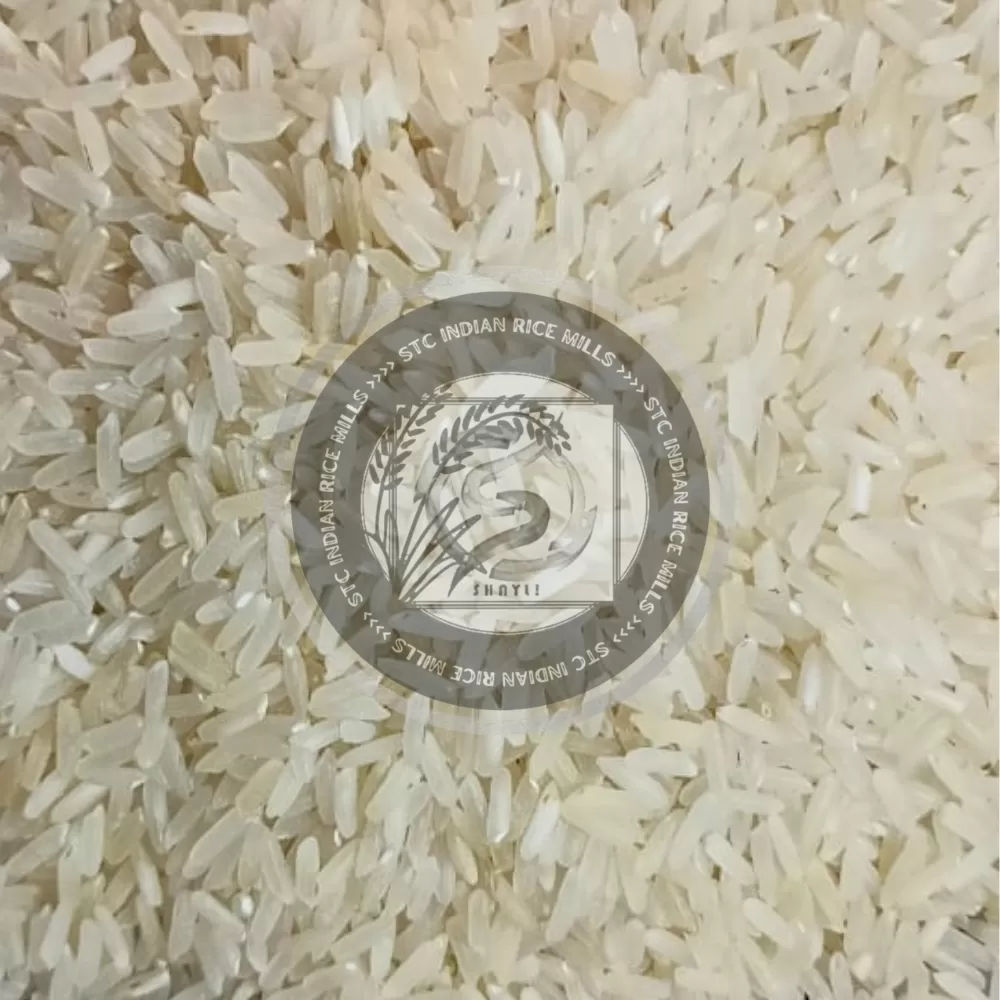
About Indian Parmal Rice (Long Grain Rice) :- Indian Parmal Rice, often referred to as PR106 or PR47, is a type of Non-Basmati Rice known for its long grains. Here are key points about Indian Parmal Rice:
Milling & Grading Process :- The process of cultivating and processing Indian Parmal Raw Rice involves several stages, ensuring the production of high-quality rice. Here is an overview of the typical process:
| Origin | India |
| Purity | 95.00% |
| Natural Admixture | 5.00% |
| Average Grain Length | 6.50MM |
| Moisture | 14% MAX. |
| Broken Grain | 5% MAX. |
| Damage/Discolour Grain | 1% MAX. |
| Immature Grain | 1% MAX. |
| Contrasting Varieties | 0.00% |
| Under-milled & Red-striped | 0.00% |
| Sortex Clean |
100% |
| Color |
White |
| Polishing Grade |
Double silky Polished |
| Milling Degree | Well Milled |
| Foreign Matter | Nil |
| Packaging Type | Jute, PP, WPP, BOPP, Jambo PP, LDPET, Non-woven Bags & Side Gussetz, 3D/2D Pouches or (1kg to 1000kgs Bags Packaging Available as per Buyer's choices). |
| Supply Ability | 2000 tons Per Week |
| Main Export Market(S) | Europe, USA, Australia, Saudi Arabia, Kuwait, Egypt, UAE, Jordan, Oman, Bahrain, Yemen, Syria, Iraq, Libya, Turkey |
| Delivery Time | 15 Days |
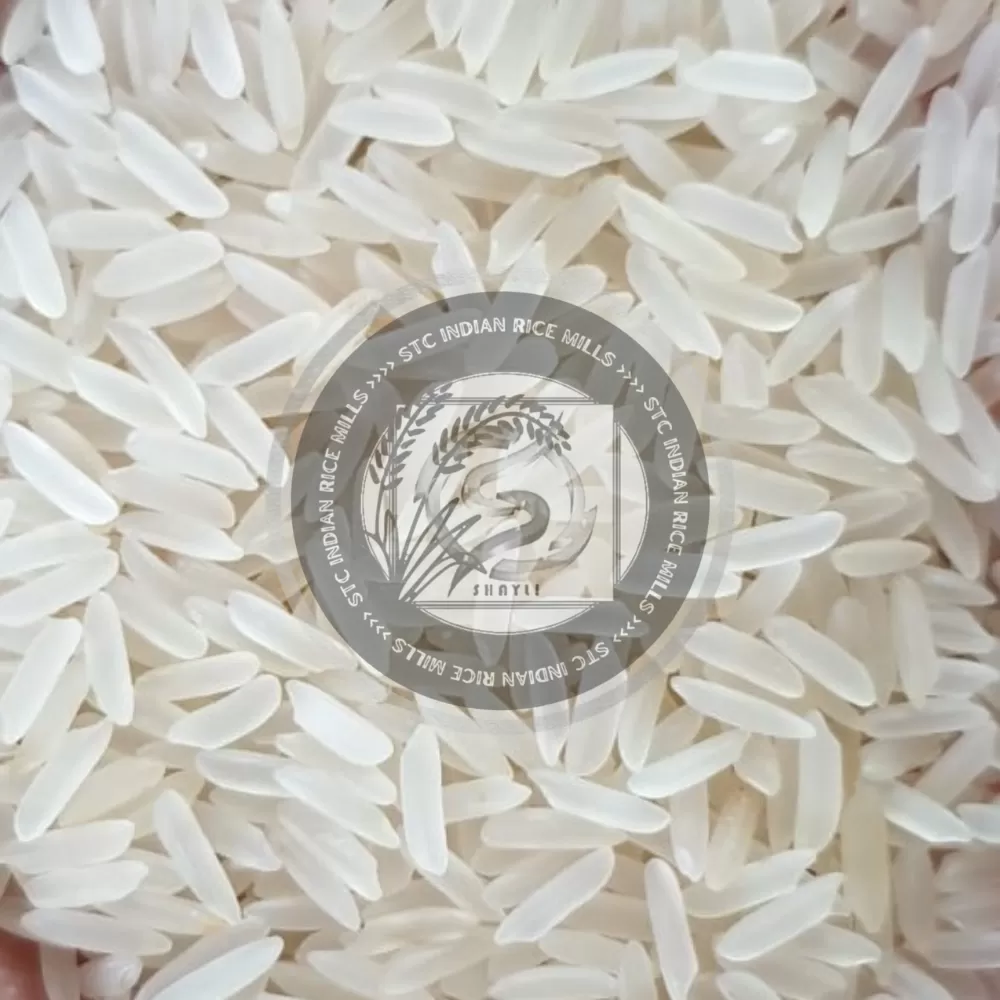
About Indian Parmal Rice (Long Grain Rice) :- Indian Parmal Rice, often referred to as PR106 or PR47, is a type of Non-Basmati Rice known for its long grains. Here are key points about Indian Parmal Rice:
Milling & Parboiling Process :- The parboiling process for Indian Parmal Rice involves specific steps to enhance its nutritional value and alter the texture of the grains. Parboiling is a method where rice is partially boiled in the husk, and then the rice undergoes milling to produce parboiled rice. Here is an overview of the parboiling process for Parmal Rice:
| Origin | India |
| Purity | 95.00% |
| Natural Admixture | 5.00% |
| Average Grain Length | 6.50MM |
| Moisture | 14% MAX. |
| Broken Grain | 5% MAX. |
| Damage/Discolour Grain | 1% MAX. |
| Immature Grain | 1% MAX. |
| Contrasting Varieties | 0.00% |
| Under-milled & Red-striped | 0.00% |
| Sortex Clean |
100% |
| Color |
White/Creamy |
| Polishing Grade |
Double silky Polished |
| Milling Degree | Well Milled |
| Foreign Matter | Nil |
| Packaging Type | Jute, PP, WPP, BOPP, Jambo PP, LDPET, Non-woven Bags & Side Gussetz, 3D/2D Pouches or (1kg to 1000kgs Bags Packaging Available as per Buyer's choices). |
| Supply Ability | 2000 tons Per Week |
| Main Export Market(S) | Europe, USA, Australia, Saudi Arabia, Kuwait, Egypt, UAE, Jordan, Oman, Bahrain, Yemen, Syria, Iraq, Libya, Turkey |
| Delivery Time | 15 Days |
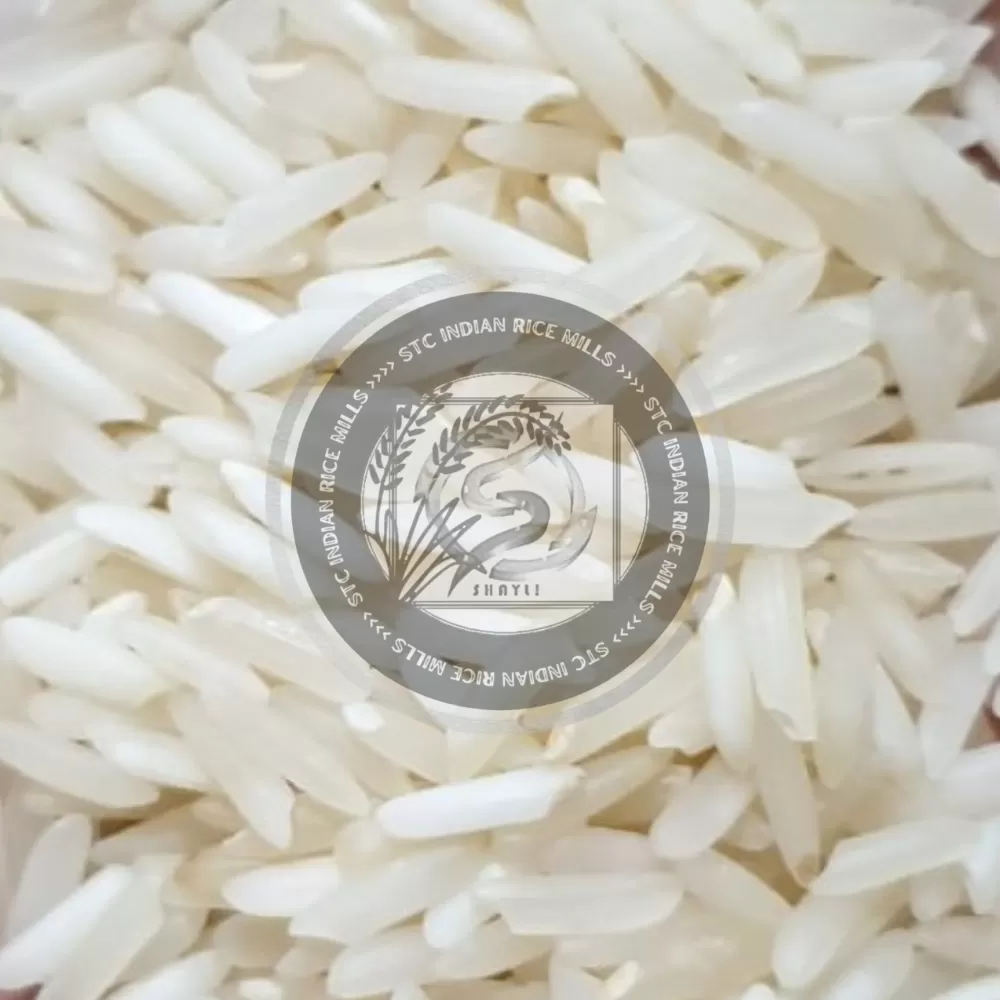
About Indian Parmal Rice (Long Grain Rice) :- Indian Parmal Rice, often referred to as PR106 or PR47, is a type of Non-Basmati Rice known for its long grains. Here are key points about Indian Parmal Rice:
Milling & Steaming Process :- The steaming process for Indian Parmal Rice involves specific steps to alter the texture and prepare the rice for consumption. Steaming is a common method used to partially cook rice before further processing. Here is an overview of the steaming process for Parmal Steam Rice:
| Origin | India |
| Purity | 95.00% |
| Natural Admixture | 5.00% |
| Average Grain Length | 6.50MM |
| Moisture | 14% MAX. |
| Broken Grain | 5% MAX. |
| Damage/Discolour Grain | 1% MAX. |
| Immature Grain | 1% MAX. |
| Contrasting Varieties | 0.00% |
| Under-milled & Red-striped | 0.00% |
| Sortex Clean |
100% |
| Color |
Yellow white |
| Polishing Grade |
Double silky Polished |
| Milling Degree | Well Milled |
| Foreign Matter | Nil |
| Packaging Type | Jute, PP, WPP, BOPP, Jambo PP, LDPET, Non-woven Bags & Side Gussetz, 3D/2D Pouches or (1kg to 1000kgs Bags Packaging Available as per Buyer's choices). |
| Supply Ability | 2000 tons Per Week |
| Main Export Market(S) | Europe, USA, Australia, Saudi Arabia, Kuwait, Egypt, UAE, Jordan, Oman, Bahrain, Yemen, Syria, Iraq, Libya, Turkey |
| Delivery Time | 15 Days |
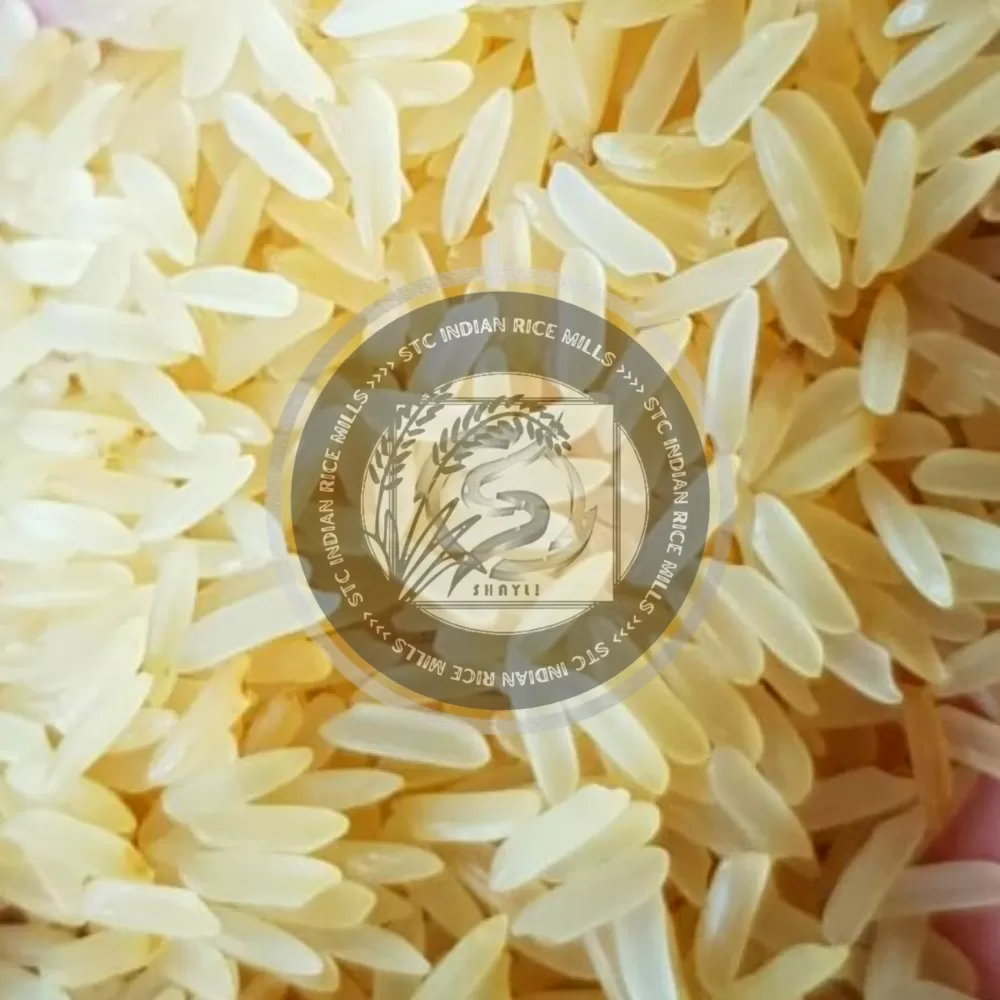
About Indian Parmal Rice (Long Grain Rice) :- Indian Parmal Rice, often referred to as PR106 or PR47, is a type of Non-Basmati Rice known for its long grains. Here are key points about Indian Parmal Rice:
Milling & Golden Parboiling Process :- The Golden Sella process involves specific steps to parboil and then sella (dry) the rice, giving it a golden color and distinct characteristics. Here is an overview of the process for producing Parmal Golden Sella Rice:
| Origin | India |
| Purity | 95.00% |
| Natural Admixture | 5.00% |
| Average Grain Length | 6.50MM |
| Moisture | 14% MAX. |
| Broken Grain | 5% MAX. |
| Damage/Discolour Grain | 1% MAX. |
| Immature Grain | 1% MAX. |
| Contrasting Varieties | 0.00% |
| Under-milled & Red-striped | 0.00% |
| Sortex Clean |
100% |
| Color |
Yellow white |
| Polishing Grade |
Double silky Polished |
| Milling Degree | Well Milled |
| Foreign Matter | Nil |
| Packaging Type | Jute, PP, WPP, BOPP, Jambo PP, LDPET, Non-woven Bags & Side Gussetz, 3D/2D Pouches or (1kg to 1000kgs Bags Packaging Available as per Buyer's choices). |
| Supply Ability | 2000 tons Per Week |
| Main Export Market(S) | Europe, USA, Australia, Saudi Arabia, Kuwait, Egypt, UAE, Jordan, Oman, Bahrain, Yemen, Syria, Iraq, Libya, Turkey |
| Delivery Time | 15 Days |
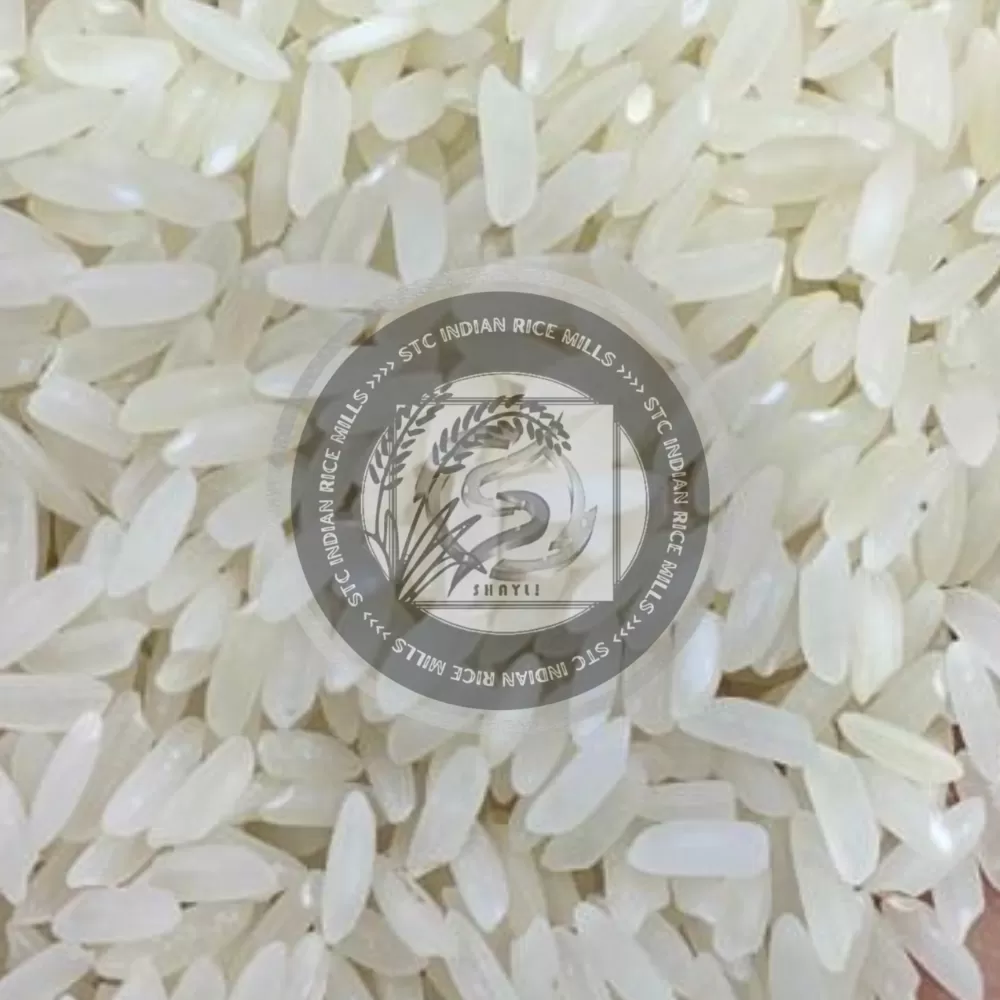
About Indian Sona Masoori Rice:- Sona Masoori is a popular variety of rice known for its distinct characteristics. Here are some key points about Sona Masoori Rice:
Milling & Grading Process :- Sona Masoori Raw Rice is known for its unique taste, fragrance, and versatility in various culinary applications. The process of cultivating and processing Sona Masoori Raw Rice involves several steps:
| Origin | India |
| Purity | 95.00% |
| Natural Admixture | 5.00% |
| Average Grain Length | 5.20MM |
| Moisture | 14% MAX. |
| Broken Grain | 5% MAX. |
| Damage/Discolour Grain | 1% MAX. |
| Immature Grain | 1% MAX. |
| Contrasting Varieties | 0.00% |
| Under-milled & Red-striped | 0.00% |
| Sortex Clean |
100% |
| Color |
Yellow white |
| Polishing Grade |
Double silky Polished |
| Milling Degree | Well Milled |
| Foreign Matter | Nil |
| Packaging Type | Jute, PP, WPP, BOPP, Jambo PP, LDPET, Non-woven Bags & Side Gussetz, 3D/2D Pouches or (1kg to 1000kgs Bags Packaging Available as per Buyer's choices). |
| Supply Ability | 2000 tons Per Week |
| Main Export Market(S) | Europe, USA, Australia, Saudi Arabia, Kuwait, Egypt, UAE, Jordan, Oman, Bahrain, Yemen, Syria, Iraq, Libya, Turkey |
| Delivery Time | 15 Days |
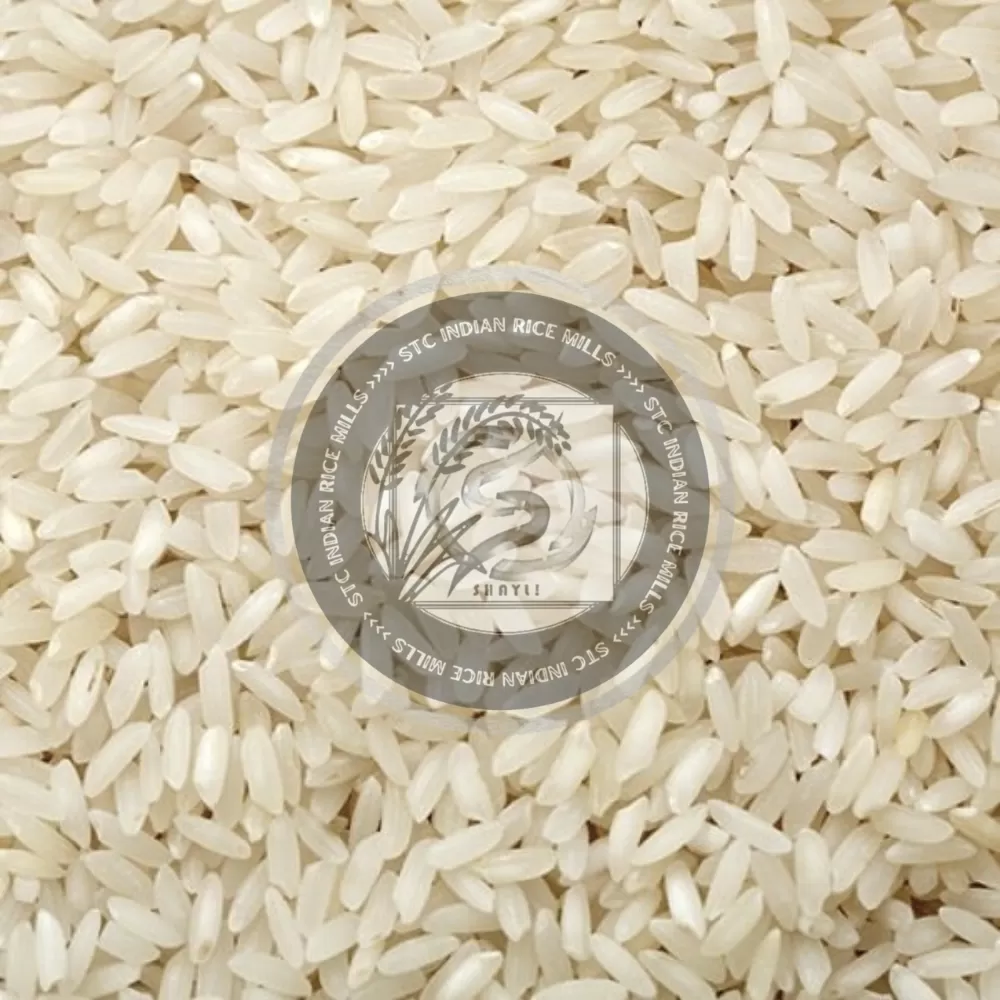
About Indian Sona Masoori Rice:- Sona Masoori is a popular variety of rice known for its distinct characteristics. Here are some key points about Sona Masoori Rice:
Milling & Steaming Process :- Sona Masoori Steamed Rice undergoes a specific steaming process that enhances its texture, taste, and appearance. The steaming process involves several steps to ensure the rice retains its unique characteristics:
| Origin | India |
| Purity | 95.00% |
| Natural Admixture | 5.00% |
| Average Grain Length | 5.20MM |
| Moisture | 14% MAX. |
| Broken Grain | 5% MAX. |
| Damage/Discolour Grain | 1% MAX. |
| Immature Grain | 1% MAX. |
| Contrasting Varieties | 0.00% |
| Under-milled & Red-striped | 0.00% |
| Sortex Clean |
100% |
| Color |
Yellow white |
| Polishing Grade |
Double silky Polished |
| Milling Degree | Well Milled |
| Foreign Matter | Nil |
| Packaging Type | Jute, PP, WPP, BOPP, Jambo PP, LDPET, Non-woven Bags & Side Gussetz, 3D/2D Pouches or (1kg to 1000kgs Bags Packaging Available as per Buyer's choices). |
| Supply Ability | 2000 tons Per Week |
| Main Export Market(S) | Europe, USA, Australia, Saudi Arabia, Kuwait, Egypt, UAE, Jordan, Oman, Bahrain, Yemen, Syria, Iraq, Libya, Turkey |
| Delivery Time | 15 Days |